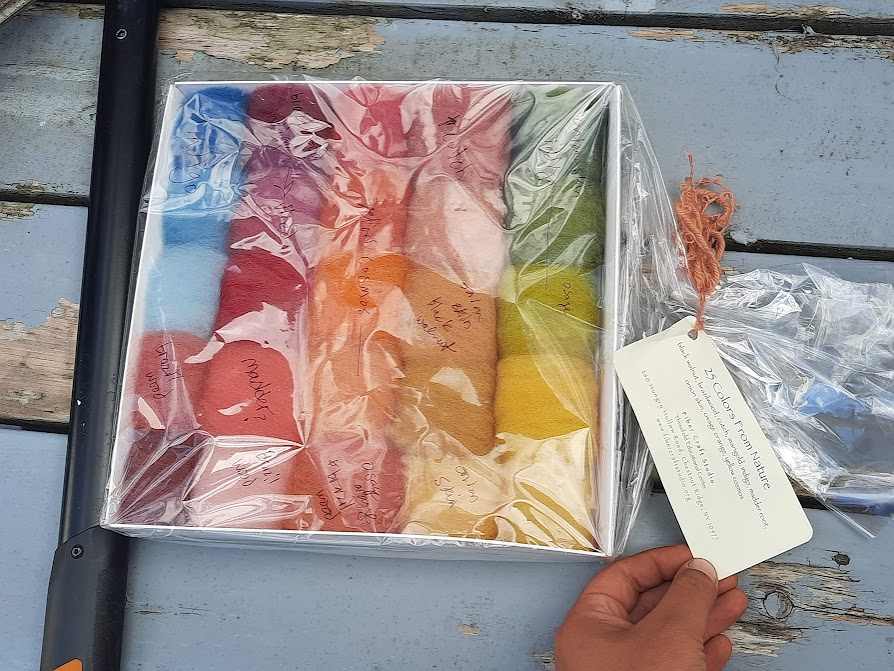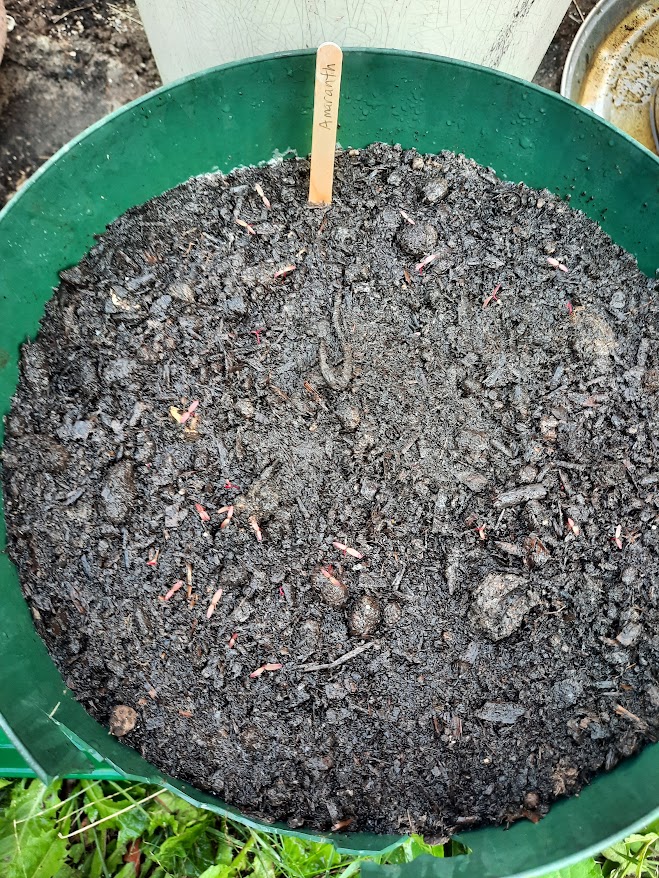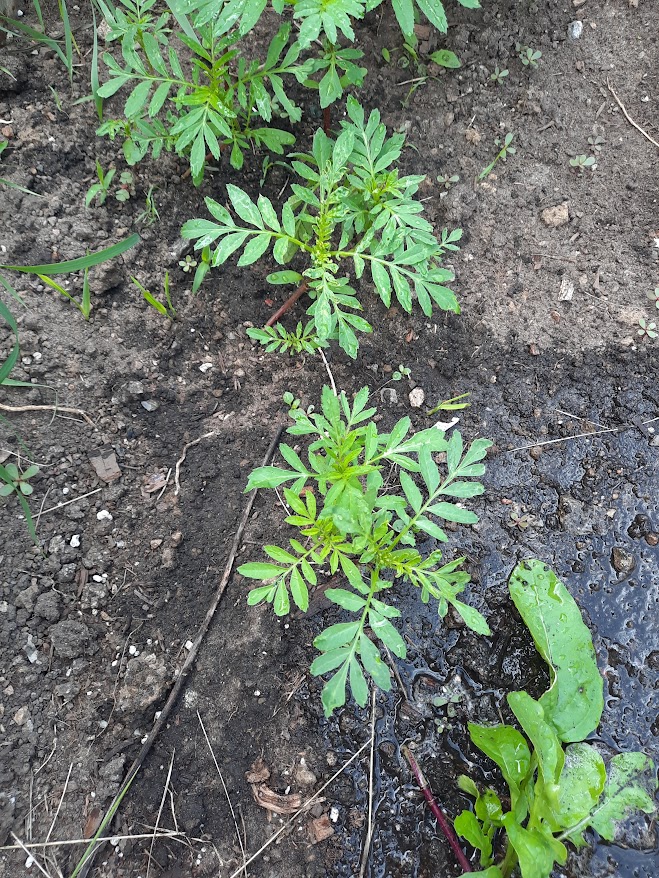There are many gardens around Duncan MacArthur Hall with a variety of purposes: the ornamental gardens along the sidewalks are run by Queen’s facilities, and the gardens in the courtyard which feature native plants that support local biodiversity and are used by the ITEP program to Indigenize education.
The gardens run by OEE are functional gardens, so every plant has a specific human use. The flowers that we plant, in addition to being pretty and deterring some pests, get used in the fall to make natural dyes. The pictures on the right are examples made/used by the program coordinator as they practice and promote Waldorf School theories.


Full colour flowers make the best plant dyes, so flowers should not be left to dry out on the stem. Instead, pluck them when they are full colour and save them in species-specific freezer containers.
Amaranth
The amaranth seedlings took about five days to emerge when planted mid-July. The vegetative state followed very quickly.

Black Hollyhock
Black hollyhocks are a perennial plants that benefit from air circulation and stalks. They are planted in one of the barrel planters to prevent them from shading, and being shaded by, the food crops, and to make staking easier.
The black hollyhock seedlings took about two weeks to emerge, but were quite large when they did.



Chamomile (Dyer’s, aka Golden Margeurite)
The seed pack used was only labelled “chamomile”, so it is unclear (as of yet) if it was Dyer’s Chamomile (Golden Margeurite), or German Chamomile, though it was likely Golden Margeurite not German, because German is used for teas not dyes and the seeds are meant to be for dyeing.
The chamomile seedlings took about two weeks to emerge when planted mid-July.

Calendula
The calendula seedlings took one to two weeks to emerge after planting mid-july.

Plains Coreopsis

Coreopsis flowers are native draught resistant flowers that love full sun. The most maintenance they require is regular deadheading to ensure constant blooms throughout the year!
Indigo
Marigold
The ’24 OEE class planted marigolds throughout the main beds in the neslted garden and in one of the barrel planters. Marigolds help deter pests, and can be used to make yellow to orange dye.


Nasturtiums
Nasturtiums are an edible flower often added to salads – they have a bit of a peppery kick like radishes. Some people don’t like the taste, so they can also be made into red, yellow, and orange dyes. Nasturtiums have distinct lilly-pad like leaves and long stems. Try planting near the edge of beds so they can spill over without taking up like from the other seedlings.

Weld
Woad
Dyer’s woad is a historically popular plant around south-eastern Europe because of the strong blue pigment in its leaves. After it is established in its bed, it will grow clusters of small yellow flowers that become green hanging seed pods. The plant has become invasive in parts of Western Turtle Island, so the seeds should be collected to prevent it from taking over the nestled garden. It is the only plant planted in the triangular garden bed, which makes weeding in that space easy.
Leave a Reply